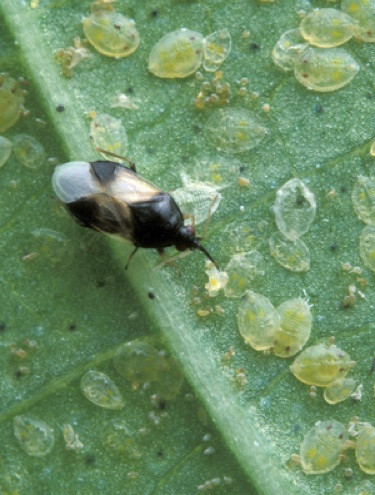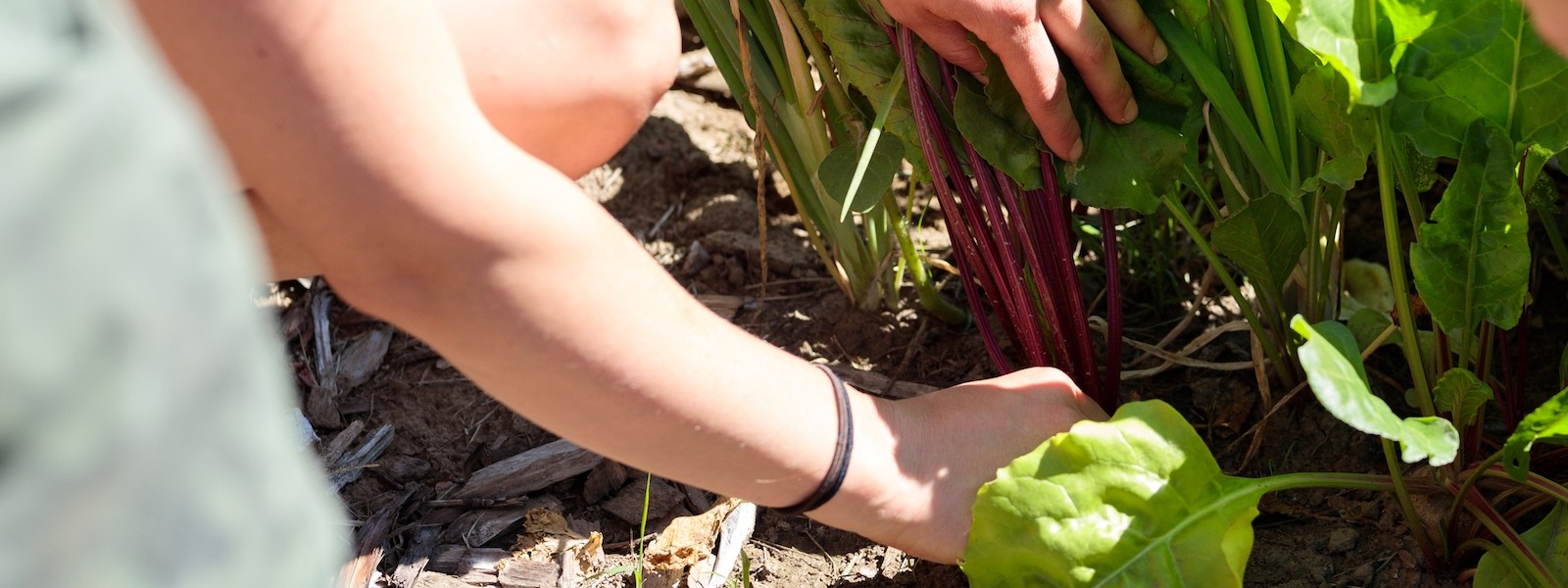Beneficial Insect: Pirate Bug
Ah-hoy! Appropriately named, these bugs are villains toward other pests in your garden.
Pirate Bugs are general-purpose feeders about 1/20” long, and both nymphs and adults possess a “piercing-sucking beak” which they use to pierce a hole and suck their victims dry. In the young stage Pirate Bugs are yellow; while in older nymphal stages the color changes to brown. The winged adult stage is characterized by a brownish to black color on the wings, with grey-white faces.

Life Cycle
The female Pirate Bug lays her eggs in the plant tissue, especially in the leaf and flower petioles and in the main veins. Eggs are white-clear in color. Each female lays about 2-4 eggs per day, depending on the availability of food and the temperature. Over their 3-4 week adult lifespan, a female can lay 80-100 eggs.
Pests They Control
Pirate Bugs prefer thrips larvae, but adult thrips are also killed as well as spider mites, insect eggs, aphids, and small caterpillars. Each adult Pirate Bug can eat 5 to 20 thrips larvae per day, and with higher thrips infestations even more are killed.
How to Attract and Keep Them
- Provide them a diversity of plants with flowers as they also consume pollen. These plants will welcome them into your garden. Choose: Goldenrods, daisies, alfalfa, and yarrow.
- Leave weeds flowering weeds in your garden.
- Purchase pirate bugs. They are supplied in bottles, mixed with vermiculite and buckwheat shells. They should be released as quickly as possible after delivery. In order to get an even distribution, the bottles should be gently shaken and turned before use. Spread the contents out on the soil surface and/or over the leaves. The material should then remain on the leaves for a few days, in order to give all Pirate Bug nymphs the chance to establish themselves in the crop. Spread the material evenly over the infested areas. In areas of heavier thrip infestation add extra bugs.
More About…
Pirate Bugs don’t breed well during short day-lengths, so additional lighting may be used to provide a total of 15+ hours of light daily.
Sources
CCF staff
Good Bug, Bad Bug by Walliser 2008
The Organic Gardener’s Handbook by Ellis and Bradley 1996

